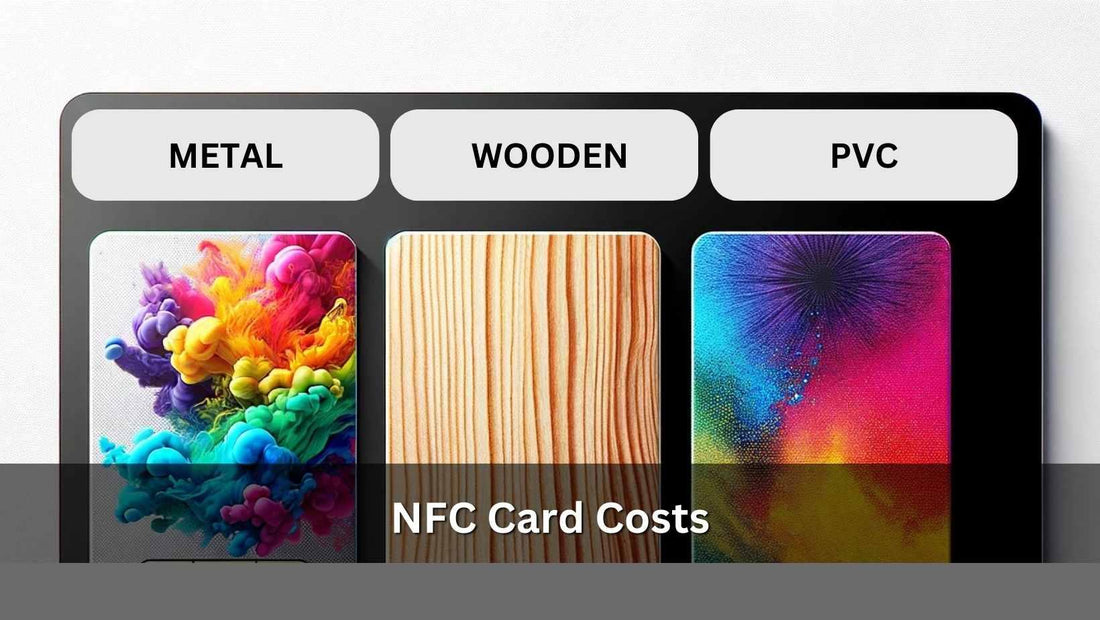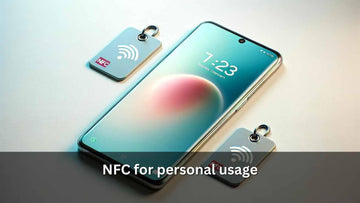Understanding NFC Card Costs: Customization, Materials, and Pricing Insights

Introduction:
Near Field Communication (NFC) technology has become a cornerstone in the digital exchange of data over short distances. Embedded in various types of cards, NFC enables seamless interactions between devices, facilitating tasks such as contactless payments, access control, and data sharing with a simple tap.
In today’s fast-paced world, NFC cards stand out for their convenience and security, offering users a quick and efficient way to carry out transactions without the need for physical contact. As we continue to embrace digital solutions in our daily routines, the importance of NFC cards grows, highlighting their role in shaping a more connected and efficient digital future.
An Overview of NFC Cards
NFC cards harness Near Field Communication technology to enable wireless communication between devices over a short range. These cards are embedded with an NFC chip that stores data, which can be read by NFC-enabled devices, such as smartphones and payment terminals. This technology is widely utilized for various applications, including contactless payments, identity verification, access control, and information sharing, providing a convenient and secure method for digital interactions.
There are two main types of NFC cards: customized and blank. Customized NFC cards are tailored to meet specific requirements, allowing for the addition of personalized designs, logos, or business details directly onto the card. This customization not only enhances brand visibility but also allows for a unique user experience.
On the other hand, blank NFC cards are devoid of any pre-printed information or design. These cards offer a cost-effective solution for users seeking the basic functionality of NFC technology without the need for personalization. Both types of cards function similarly in terms of technology but differ significantly in their application and visual appeal, catering to a wide range of user preferences and needs.
Customized vs. Blank NFC Cards
The choice between customized and blank NFC cards is pivotal, depending on the intended use and desired impact. Customized NFC cards go through a meticulous process of design, engraving, or printing, which allows for the infusion of personal or corporate branding directly onto the card. This process can range from simple logo placements to intricate designs that cover the entire surface of the card. The customization not only serves aesthetic purposes but also offers a strategic advantage in branding and marketing, making each interaction with the card a personalized experience for the user.
On the other hand, blank NFC cards provide a minimalist approach. They are typically used in scenarios where the visual aspect of the card is not a priority or when cost considerations outweigh the need for personalization. Blank cards offer the same technological capabilities as their customized counterparts, making them suitable for technical functions without the added layer of personalization.
The advantages of customization extend beyond mere aesthetics. It allows businesses and individuals to reinforce their brand identity in every physical interaction with the card, enhancing brand recognition and loyalty. Additionally, customized cards can be tailored to specific marketing campaigns, events, or membership programs, adding a layer of exclusivity and value to the user experience. In contrast, blank NFC cards are often preferred for internal purposes or situations where a quick and cost-effective deployment of NFC technology is required, without the need for brand differentiation.
Cost Factors in NFC Card Production
The production cost of NFC cards is influenced by several factors, including the material used, customization requirements, and the volume of the order. Material costs vary significantly across different types of NFC cards. Metal NFC blank cards are the most premium, offering durability and a distinctive feel, but they come at a higher price point. PVC blank cards, on the other hand, are widely used due to their balance of cost-effectiveness and robustness, making them suitable for a variety of applications. Wooden NFC blank cards present an eco-friendly alternative, offering a unique aesthetic and texture, though their cost can vary based on the type of wood and manufacturing processes involved.
Customization adds another layer to the cost structure. The complexity of the design and the methods used for printing or engraving on metal customised, PVC customised, and wooden customised cards can significantly impact the final price. Detailed designs requiring high-resolution printing or intricate engraving will incur higher costs compared to simpler, less labor-intensive customization.
Volume plays a crucial role in determining the cost per unit. Larger orders typically benefit from economies of scale, reducing the overall cost per card. Manufacturers may offer significant discounts for bulk orders, making it a critical consideration for businesses aiming to maximize cost efficiency. This volume discount is a key factor for organizations planning extensive deployments of NFC technology, as it can lead to substantial savings and influence the choice of materials and customization options.
Material Choices and Their Impact on Costs
Making the Right Choice for Your Needs
Deciding between customized and blank NFC cards hinges on your specific requirements and objectives. If brand visibility and user engagement are priorities, customized cards offer a tangible way to enhance brand identity and create memorable interactions. However, for functionality-focused applications or tight budgets, blank NFC cards provide essential capabilities without the added expense of customization.
A cost-benefit analysis of material choices is crucial. Metal cards, while premium, may exceed budget constraints but are unparalleled for luxury branding. PVC cards offer a middle ground, balancing cost and durability, suitable for a wide range of uses. Wooden cards, though unique, should be chosen for specific branding messages or when eco-friendliness is a key concern.
To budget effectively, consider the scale of your project and potential economies of scale. Start with a clear understanding of your project's scope and objectives. Prioritize features and customization based on your target audience's expectations and the intended use of the cards. Planning ahead and ordering in bulk can also leverage discounts, making your NFC card project more economically viable while meeting your strategic needs.
Conclusion:
In conclusion, the cost and customization options of NFC cards play a pivotal role in their application and impact. The choice between metal, PVC, and wooden materials offers a range of price points and aesthetic qualities, catering to diverse needs and preferences. Customized cards enhance brand engagement and identity, while blank cards provide a cost-effective solution for straightforward functionality. Understanding the balance between cost, customization, and material choice is crucial in optimizing your NFC card investment. By carefully considering these factors, you can select the most appropriate NFC card solution that aligns with your strategic objectives and budget, ensuring a successful implementation that meets your specific needs.
We at NFC Tagify provide all sort of NFC Solutions or you may contact us: Tel. 01600800080, Email: info@nfctagify.com











